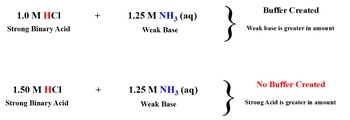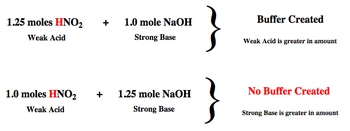Buffer solutions are essential in maintaining stable pH levels in various chemical environments. A buffer typically consists of a weak acid and its conjugate base. For example, hydrofluoric acid (HF) is a weak acid, and its conjugate base can be represented as sodium fluoride (NaF), which is formed by removing one hydrogen ion (H+) from HF, resulting in fluoride ion (F-). This combination allows the buffer to resist significant changes in pH when small amounts of strong acids or bases are added.
When a strong base is introduced to a buffer solution, the pH tends to increase. However, the weak acid present in the buffer reacts with the added base, neutralizing it and preventing a drastic rise in pH. Conversely, if a strong acid is added, the pH will decrease, but the conjugate base will similarly neutralize the acid, thus limiting the drop in pH. This interplay between the weak acid and its conjugate base is crucial, as they act to counterbalance the effects of added acids or bases, maintaining a relatively constant concentration of hydrogen ions (H+) and hydroxide ions (OH-).
It is important to note that buffers can be compromised if excessive amounts of strong acids or bases are introduced. In contrast, adding water to a buffer solution does not alter its effectiveness. This is because the addition of water dilutes both the weak acid and the conjugate base proportionally, preserving the ratio necessary for the buffer's function.
To identify whether a combination of substances forms a buffer, one must recognize the characteristics of weak acids and their conjugate bases. Understanding these principles will aid in determining which combinations do not create a buffer solution. Engaging with practice questions can further solidify this knowledge and enhance your ability to apply these concepts effectively.








